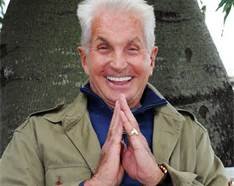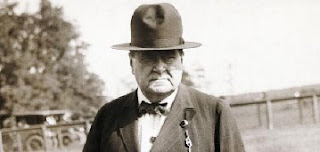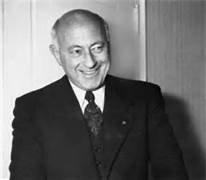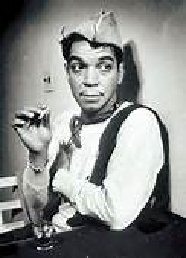Washington, D.C., formally the District of Columbia, also known as just Washington or simply D.C., is the capital city and federal district of the United States. It is located on the east bank of the Potomac River, which forms its southwestern and southern border with the U.S. state of Virginia, and it shares a land border with the U.S. state of Maryland on its remaining sides. The city was named for George Washington, a Founding Father and the first president of the United States, and the federal district is named after Columbia, a female personification of the nation. As the seat of the U.S. federal government and several international organizations, the city is an important world political capital. It is one of the most visited cities in the U.S., seeing over 20 million visitors in 2016.
The U.S. Constitution provides for a federal district under the exclusive jurisdiction of Congress; the district is therefore not a part of any U.S. state (nor is it one itself). The signing of the Residence Act on July 16, 1790, approved the creation of a capital district located along the Potomac River near the country's East Coast. The City of Washington was founded in 1791 to serve as the national capital, and Congress held its first session there in 1800. In 1801, the territory, formerly part of Maryland and Virginia (including the settlements of Georgetown and Alexandria), officially became recognized as the federal district. In 1846, Congress returned the land originally ceded by Virginia, including the city of Alexandria; in 1871, it created a single municipal government for the remaining portion of the district. There have been efforts to make the city into a state since the 1880s, a movement that has gained momentum in recent years, and a statehood bill passed the House of Representatives in 2021.
The city is divided into quadrants centered on the Capitol Building, and there are as many as 131 neighborhoods. According to the 2020 Census, it has a population of 689,545, which makes it the 20th-most populous city in the U.S., third-most populous city in both the Mid-Atlantic and Southeast, and gives it a population larger than that of two U.S. states: Wyoming and Vermont. Commuters from the surrounding Maryland and Virginia suburbs raise the city's daytime population to more than one million during the workweek. Washington's metropolitan area, the country's sixth-largest (including parts of Maryland, Virginia and West Virginia), had a 2019 estimated population of 6.3 million residents.
The three branches of the U.S. federal government are centered in the district: Congress (legislative), the president (executive), and the Supreme Court (judicial). Washington is home to many national monuments and museums, primarily situated on or around the National Mall. The city hosts 177 foreign embassies as well as the headquarters of many international organizations, trade unions, non-profits, lobbying groups, and professional associations, including the World Bank Group, the International Monetary Fund, the Organization of American States, the AARP, the National Geographic Society, the Human Rights Campaign, the International Finance Corporation, and the American Red Cross.
A locally elected mayor and a 13-member council have governed the district since 1973. Congress maintains supreme authority over the city and may overturn local laws. D.C. residents elect a single at-large congressional delegate to the House of Representatives who has no vote. The district has no representation at all in the Senate. District voters choose three presidential electors in accordance with the Twenty-third Amendment to the United States Constitution, ratified in 1961.
Various tribes of the Algonquian-speaking Piscataway people (also known as the Conoy) inhabited the lands around the Potomac River when Europeans first visited the area in the early 17th century. One group known as the Nacotchtank (also called the Nacostines by Catholic missionaries) maintained settlements around the Anacostia River within the present-day District of Columbia. Conflicts with European colonists and neighboring tribes forced the relocation of the Piscataway people, some of whom established a new settlement in 1699 near Point of Rocks, Maryland.
On October 6, forced by the Pennsylvania Mutiny of 1783 to Princeton, New Jersey, Congress resolved itself into a committee of the whole, to take into consideration, respecting a place for the permanent residence of Congress. The following day, Elbridge Gerry of Massachusetts moved "that buildings for the use of Congress be erected on the banks of the Delaware near Trenton, or of the Potomac, near Georgetown, provided a suitable district can be procured on one of the rivers as aforesaid, for a federal town".
In his Federalist No. 43, published January 23, 1788, James Madison argued that the new federal government would need authority over a national capital to provide for its own maintenance and safety. The Pennsylvania Mutiny of 1783, emphasized the need for the national government not to rely on any state for its own security.
Article One, Section Eight, of the Constitution permits the establishment of a "District (not exceeding ten miles square) as may, by cession of particular states, and the acceptance of Congress, become the seat of the government of the United States". However, the Constitution does not specify a location for the capital. In what is now known as the Compromise of 1790, Madison, Alexander Hamilton, and Thomas Jefferson agreed that the federal government would pay each state's remaining Revolutionary War debts in exchange for establishing the new national capital in the Southern United States.
If you want to read a WHOLE LOT MORE about DC, go here:
https://en.wikipedia.org/wiki/Washington,_D.C.
Today we're throwing a pizza party! Why? Because we wanted to make something new with that package of ground beef in the fridge. Our Beefy Garlic Pizza is calling your name and we bet it'll be your new favorite go-to dinner recipe, for pizza party occasions or just because. After all, who doesn't love a hearty, cheesy, beefy slice of pizza?
- 1 tablespoon vegetable oil
- 6 cloves fresh garlic, chopped
- 1 pound ground beef
- 3 plum tomatoes, seeded and chopped
- 3/4 teaspoon salt
- 1/2 teaspoon black pepper
- 1 pound store-bought pizza dough (see Tips)
- 1 (6-ounce) package sliced provolone cheese, cut into 1/2-inch strips
- Preheat oven to 400º. Coat a 12- to 14-inch pizza pan with cooking spray.
- In a large skillet over medium heat, heat oil until hot; saute garlic 4 to 5 minutes or until slightly golden.
- Add ground beef and cook 6 to 8 minutes or until completely browned, stirring frequently. Drain off excess liquid; stir in tomatoes, salt, and pepper.
- Place dough on a lightly floured surface. With a rolling pin, roll dough out to a 12- to 14-inch circle. Place on pizza pan. Using a fork, prick dough 15 to 20 times. Spoon beef mixture evenly over pizza dough and top with cheese.
- Bake 15 to 18 minutes or until crust is crisp and brown. Cut and serve immediately.

















